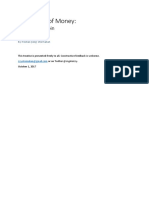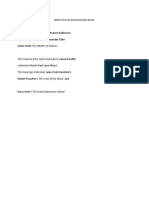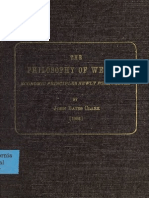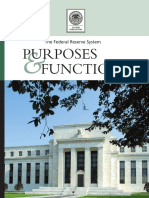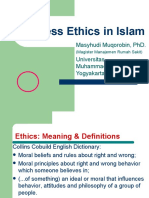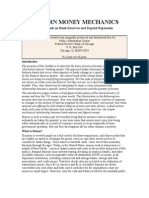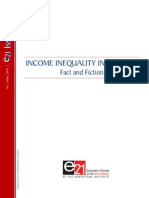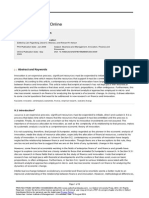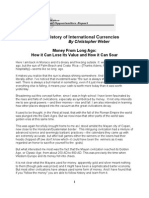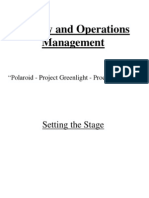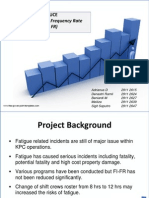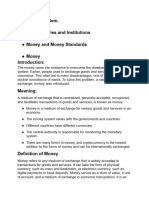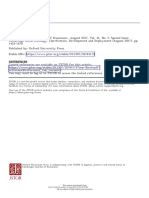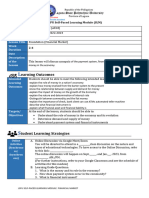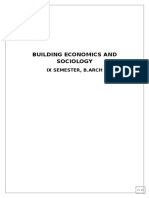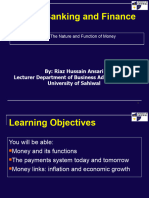Definition
Money is any object or record that is generally accepted as payment for goods and services and repayment of debts in a given socioeconomic context or country.[1][2][3] The main functions of money are distinguished as: a medium of exchange; a unit of account; a store of value; and, occasionally in the past, a standard of deferred payment.[4][5] Any kind of object or secure verifiable record that fulfills these functions can serve as money. Money is historically an emergent market phenomena establishing a commodity money, but nearly all contemporary money systems are based on fiat money.[4] Fiat money is without intrinsic use value as a physical commodity, and derives its value by being declared by a government to be legal tender; that is, it must be accepted as a form of payment within the boundaries of the country, for "all debts, public and private". The money supply of a country consists of currency (banknotes and coins) and bank money (the balance held in checking accounts and savings accounts). Bank money usually forms by far the largest part of the money supply. [6][7][8]
�History
he use of barter-like methods may date back to at least 100,000 years ago, though there is no evidence of a society or economy that relied primarily on barter.[9] Instead, non-monetary societies operated largely along the principles of gift economics and debt.[10][11] When barter did in fact occur, it was usually between either complete strangers or potential enemies.[12] Many cultures around the world eventually developed the use of commodity money. The shekel was originally a unit of weight, and referred to a specific weight of barley, which was used as currency.[13] The first usage of the term came from Mesopotamia circa 3000 BC. Societies in the Americas, Asia, Africa and Australia used shell money often, the shells of the money cowry (Cypraea moneta L. or C. annulus L.). According to Herodotus, the Lydians were the first people to introduce the use of gold and silver coins.[14] It is thought by modern scholars that these first stamped coins were minted around 650600 BC.[15] Song Dynasty Jiaozi, the world's earliest paper money The system of commodity money eventually evolved into a system of representative money.[citation needed] This occurred because gold and silver merchants or banks would issue receipts to their depositors redeemable for the commodity money deposited. Eventually, these receipts became generally accepted as a means of payment and were used as money. Paper money or banknotes were first used in China during the Song Dynasty. These banknotes, known as "jiaozi", evolved from promissory notes that had been used since the 7th century. However, they did not displace commodity money, and were used alongside coins. Banknotes were first issued in Europe by Stockholms Banco in 1661, and were again also used alongside coins. The gold standard, a monetary system where the medium of exchange are paper notes that are convertible into pre-set, fixed quantities of gold, replaced the use of gold coins as currency in the 17th-19th centuries in Europe. These gold standard notes were made legal tender, and redemption into gold coins was discouraged. By the beginning of the 20th century almost
�function
In the past, money was generally considered to have the following four main functions, which are summed up in a rhyme found in older economics textbooks: "Money is a matter of functions four, a medium, a measure, a standard, a store." That is, money functions as a medium of exchange, a unit of account, a standard of deferred payment, and a store of value.[5] However, modern textbooks now list only three functions, that of medium of exchange, unit of account, and store of value, not considering a standard of deferred payment as a distinguished function, but rather subsuming it in the others
Medium of exchange When money is used to intermediate the exchange of goods and services, it is performing a function as a medium of exchange. It thereby avoids the inefficiencies of a barter system, such as the 'double coincidence of wants' problem. Unit of account A unit of account is a standard numerical unit of measurement of the market value of goods, services, and other transactions. Also known as a "measure" or "standard" of relative worth and deferred payment, a unit of account is a necessary prerequisite for the formulation of commercial agreements that involve debt. To function as a 'unit of account', whatever is being used as money must be: Divisible into smaller units without loss of value; precious metals can be coined from bars, or melted down into bars again. Fungible: that is, one unit or piece must be perceived as equivalent to any other, which is why diamonds, works of art or real estate are not suitable as money. A specific weight, or measure, or size to be verifiably countable. For instance, coins are often milled with a reeded edge,so that any removal of material from the coin (lowering its commodity value) will be easy to detect. Store of value To act as a store of value, a money must be able to be reliably saved, stored, and retrieved and be predictably usable as a medium of exchange when it is retrieved. The value of the money must also remain stable over time. Some have argued that inflation, by reducing the value of money, diminishes the ability of the money to function as a store of value. [4] Standard of deferred payment While standard of deferred payment is distinguished by some texts,[5] particularly older ones, other texts subsume this under other functions.[4][18][19] A "standard of deferred payment" is an accepted way to settle a debt a unit in which debts are denominated, and the status of money as legal tender, in those jurisdictions which have this concept, states that it may function for the discharge of debts. When debts are denominated in money, the real value of debts may change due to inflation and deflation, and for sovereign and international debts via debasement and devaluation. Measure of value Money acts as a standard measure and common denomination of trade. It is thus a basis for quoting and bargaining of prices. It is necessary for developing efficient accounting systems. But its most important usage is as a method for comparing the values of dissimilar objects.
�Types of money
Currently, most modern monetary systems are based on fiat money. However, for most of history, almost all money was commodity money, such as gold and silver coins. As economies developed, commodity money was eventually replaced by representative money, such as the gold standard, as traders found the physical transportation of gold and silver burdensome. Fiat currencies gradually took over in the last hundred years, especially since the breakup of the Bretton Woods system in the early 1970s.
Commodity money Main article: Commodity money A 1914 British Gold sovereign Many items have been used as commodity money such as naturally scarce precious metals, conch shells, barley, beads etc., as well as many other things that are thought of as having value. Commodity money value comes from the commodity out of which it is made. The commodity itself constitutes the money, and the money is the commodity. [21] Examples of commodities that have been used as mediums of exchange include gold, silver, copper, rice, salt, peppercorns, large stones, decorated belts, shells, alcohol, cigarettes, cannabis, candy, etc. These items were sometimes used in a metric of perceived value in conjunction to one another, in various commodity valuation or Price System economies. Use of commodity money is similar to barter, but a commodity money provides a simple and automatic unit of account for the commodity which is being used as money. Although some gold coins such as the Krugerrand are considered legal tender, there is no record of their face value on either side of the coin. The rationale for this is that emphasis is laid on their direct link to the prevailing value of their fine gold content.[22] American Eagles are imprinted with their gold content and legal tender face value.[23] Representative money Main article: Representative money In 1875 economist William Stanley Jevons described what he called "representative money," i.e., money that consists of token coins, or other physical tokens such as certificates, that can be reliably exchanged for a fixed quantity of a commodity such as gold or silver. The value of representative money stands in direct and fixed relation to the commodity that backs it, while not itself being composed of that commodity.[24]
Fiat money Main article: Fiat money Fiat money or fiat currency is money whose value is not derived from any intrinsic value or guarantee that it can be converted into a valuable commodity (such as gold). Instead, it has value only by government order (fiat). Usually, the government declares the fiat currency (typically notes and coins from a central bank, such as the Federal Reserve System in the U.S.) to be legal tender, making it unlawful to not accept the fiat currency as a means of repayment for all debts, public and private.[25][26] Some bullion coins such as the Australian Gold Nugget and American Eagle are legal tender, however, they trade based on the market price of the metal content as a commodity, rather than their legal tender face value (which is usually only a small fraction of their bullion value). [23][27] Fiat money, if physically represented in the form of currency (paper or coins) can be accidentally damaged or destroyed. However, fiat money has an advantage over representative or commodity money, in that the same laws that created the money can also define rules for its replacement in case of damage or destruction. For example, the U.S. government will replace mutilated Federal Reserve notes (U.S. fiat money) if at least half of the physical note can be reconstructed, or if it can be otherwise proven to have been destroyed. [28] By contrast, commodity money which has been lost or destroyed cannot be recovered. Currency Main article: currency Currency refers to physical objects generally accepted as a medium of exchange. These are usually the coins and banknotes of a particular government, which comprise the physical aspects of a nation's money supply. The other part of a nation's money supply consists of bank deposits (sometimes called deposit money), ownership of which can be transferred by means of cheques, debit cards, or other forms of money transfer. Deposit money and currency are money in the sense that both are acceptable as a means of payment.[29] Money in the form of currency has predominated throughout most of history. Usually (gold or silver) coins of intrinsic value (commodity money) have been the norm. However, nearly all contemporary money systems are based on fiat money modern currency has value only by government order (fiat). Usually, the government declares the fiat currency (typically notes and coins issued by the central bank) to be legal tender, making it unlawful to not accept the fiat currency as a means of repayment for all debts, public and private. [25][26] Commercial bank money Main article: Demand deposit Demand deposit in cheque form. Commercial bank money or demand deposits are claims against financial institutions that can be used for the purchase of goods and services. A demand deposit account is an account from which funds can be withdrawn at any time by check or cash withdrawal without giving the bank or financial institution any prior notice. Banks have the legal obligation to return funds held in demand deposits immediately upon demand (or 'at call'). Demand deposit withdrawals can be performed in person, via checks or bank drafts, using automatic teller machines (ATMs), or through online banking.[30] Commercial bank money is created through fractional-reserve banking, the banking practice where banks keep only a fraction of their deposits in reserve (as cash and other highly liquid assets) and lend out the remainder, while maintaining the simultaneous obligation to redeem all these deposits upon demand.[31][32] Commercial bank money differs from commodity and fiat money in two ways, firstly it is non-physical, as its existence is only reflected in the account ledgers of banks and other financial institutions, and secondly, there is some element of risk that the claim will not be fulfilled if the financial institution becomes insolvent. The process of fractional-reserve banking has a cumulative effect of money creation by commercial banks, as it expands money supply (cash and demand deposits) beyond what it would otherwise be. Because of the prevalence of fractional reserve banking, the broad money supply of most countries is a multiple larger than the amount of base money created by the country's central bank. That multiple (called the money multiplier) is determined by the reserve requirement or other financial ratio requirements imposed by financial regulators. The money supply of a country is usually held to be the total amount of currency in circulation plus the total amount of checking and savings deposits in the commercial banks in the country. In modern economies, relatively little of the money supply is in physical currency. For example, in December 2010 in the U.S., of the $8853.4 billion in broad money supply (M2), only $915.7 billion (about 10%) consisted of physical coins and paper money.[33] Digital money Digital currencies gained momentum in before the 2000 tech bubble. Flooz and Beenz were particularly advertised as an alternative form of money. While the tech bubble caused them to be short lived, many new digital currencies have reached some, albeit generally small userbases. Most digital currencies are simply fiat currencies parleyed across a digital medium. However, protocols like Bitcoin allow money to only exist in cyberspace which allows for some classic limitations to be lifted. Never before has the sending of money across a geographical divide not required the trust of a third party which of course then is susceptible to regulatory capture. New forms of currency coming to fruition this very day allow for the free exchange of wealth across distances.
�references
^ Mishkin, Frederic S. (2007). The Economics of Money, Banking, and Financial Markets (Alternate Edition). Boston: Addison Wesley. p. 8. ISBN 0-321-42177-9. ^ What Is Money? By John N. Smithin [1]. Retrieved July-17-09. ^ "money : The New Palgrave Dictionary of Economics". The New Palgrave Dictionary of Economics. Retrieved 18 December 2010. ^ a b c d e Mankiw, N. Gregory (2007). "2". Macroeconomics (6th ed.). New York: Worth Publishers. pp. 2232. ISBN 0-7167-6213-7. ^ a b c d T.H. Greco. Money: Understanding and Creating Alternatives to Legal Tender, White River Junction, Vt: Chelsea Green Publishing (2001). ISBN 1-890132-37-3 ^ Boyle, David (2006). The Little Money Book. The Disinformation Company. pp. 37. ISBN 978-1-932857-26-9. ^ "On2 Money / A History of Money". pbs.org. Retrieved 2009-04-20. ^ Bernstein, Peter, A Primer on Money and Banking, and Gold, Wiley, 2008 edition, pp29-39 ^ Mauss, Marcel. 'The Gift: The Form and Reason for Exchange in Archaic Societies.' pp. 36-37. ^ "What is Debt? An Interview with Economic Anthropologist David Graeber". Naked Capitalism.














